The Chernobyl Exclusion Zone has become one of the most popular places to visit on the ‘Dark Tourism’ circuit in recent years due to the incredibly successful HBO series about the tragedy. This has brought tens of thousands of tourists flocking to the exclusion zone, curious to see what a post apocalyptic world looks like. We decided to pay a visit and see it for ourselves on a cold winter’s day in February. Join us and see what it is like to take a tour around the Chernobyl Exclusion Zone.
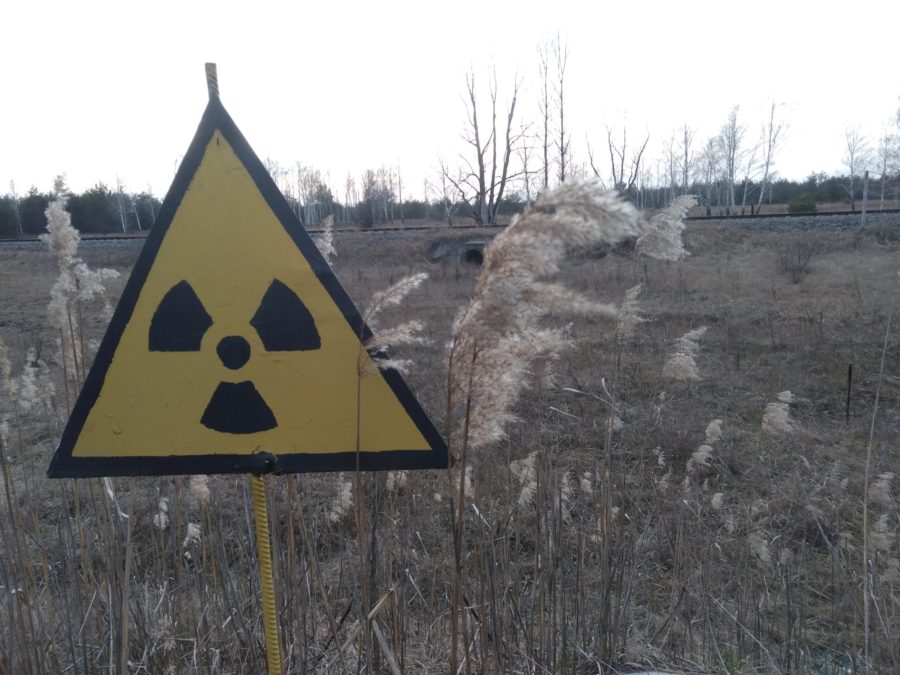
What is the Chernobyl Exclusion Zone?
The Chernobyl Exclusion Zone is an area with a radius of 30 kilometers from the Chernobyl nuclear power plant. It has radiation levels too high for human habitation so public access is restricted and limited. The area was evacuated shortly after the nuclear disaster in 1986 which has left Pripyat city and many surrounding villages abandoned for the last 3 decades.
What happened at Chernobyl?
At 01.23 on 26 April 1986 a terrible accident occurred at reactor 4 of the Chernobyl power plant during a routine shutdown simulation test. The reactor core overheated which caused an explosion that blew the roof off the containment unit. This released a vast amount of radioactive contamination into the atmosphere and caused what is considered to be the worst nuclear disaster in history.
Chernobyl is said to have emitted the equivalent of 500 nuclear bombs worth of fallout which spread across Europe. It was even detected in Scandinavia.
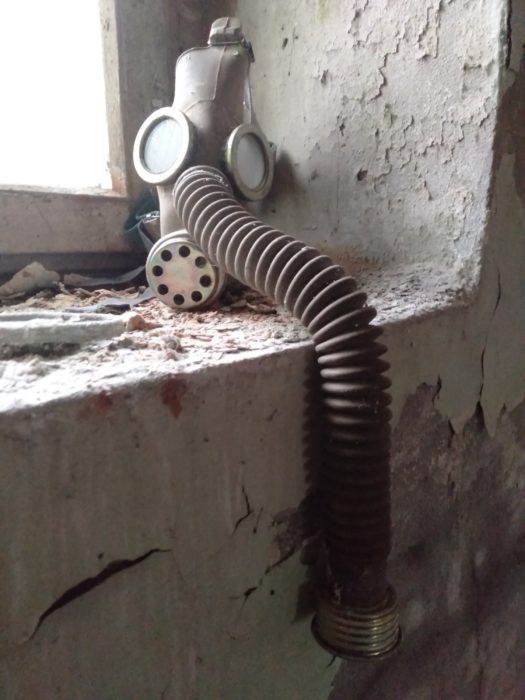
Evacuate!
It took the powers that be 36 hours to decide to evacuate the area surrounding the site, including the entire city of Pripyat, with a population of 50,000 people. These people had already been exposed to dangerously high levels of ionising radiation.
They were told to pack their bags and leave their homes and that they would be gone for 3 days. They were never allowed to return due to the devastating effects of the nuclear fallout. Their homes and lives were left totally abandoned and nature has reclaimed the city and surrounding area.
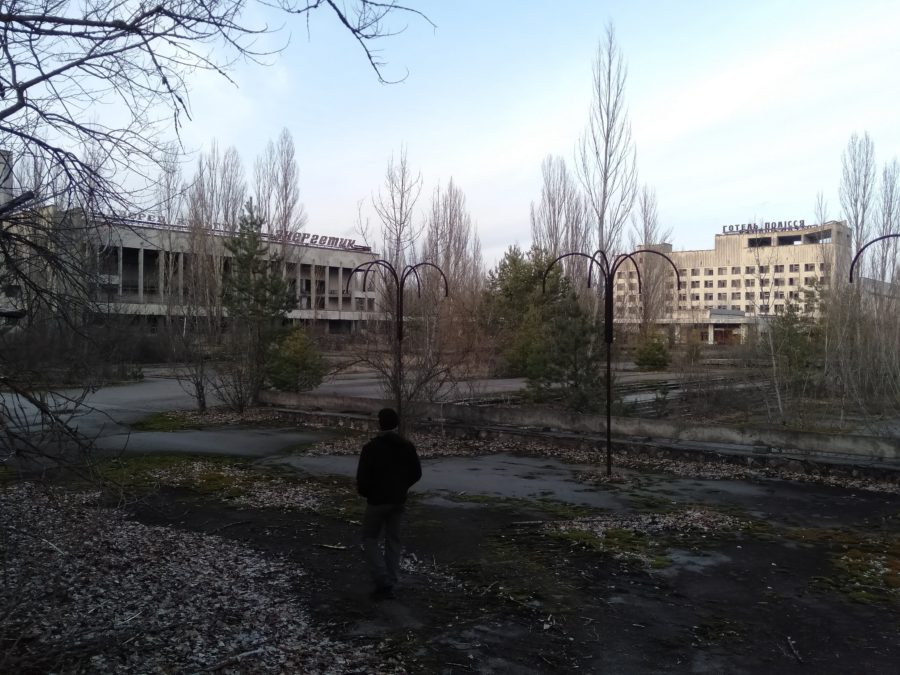
Is it safe to visit the Chernobyl Exclusion Zone?
Radiation levels have subsided over the years as the area has been cleaned up considerably of seriously contaminated waste. Nowadays the exposure is minimal as long as you abide by the rules and watch where you go. Places like the red forest which are still heavily contaminated are out of bounds. You are instructed not to touch anything or sit down on the floor or any objects.
You can hire a dosimeter (Geiger counter) which can give you a constant reading of contamination levels and you wear a personal one which will give you a count of your entire level of exposure during your visit. I received 0.003 microsieverts of radiation during my visit which is the equivalent o taking a 3 hour flight.

Why would you visit the Chernobyl Exclusion Zone?
There is no doubt about it, It is certainly a unique place. In fact I can’t think of any other place like it on earth. I think for a lot of people, they want to experience the bizarre concept of walking through a city that was inhabited by so many but has been abandoned for so long. It is like stepping into the twilight zone. With the advent of the post apocalyptic genre coming into vogue in fiction and film, people want a taste of the reality.
Walking through Pripyat could also be described as being in a time warp. Right back to the Soviet Union days of the 1980’s. The buildings, streets and parks have remained unchanged other than the rampant reclamation by nature as trees and plants slowly take over and engulf the city. Wildlife has moved in too, as wolves, foxes and deer enjoy their freedom in this zone where hunting has been outlawed.
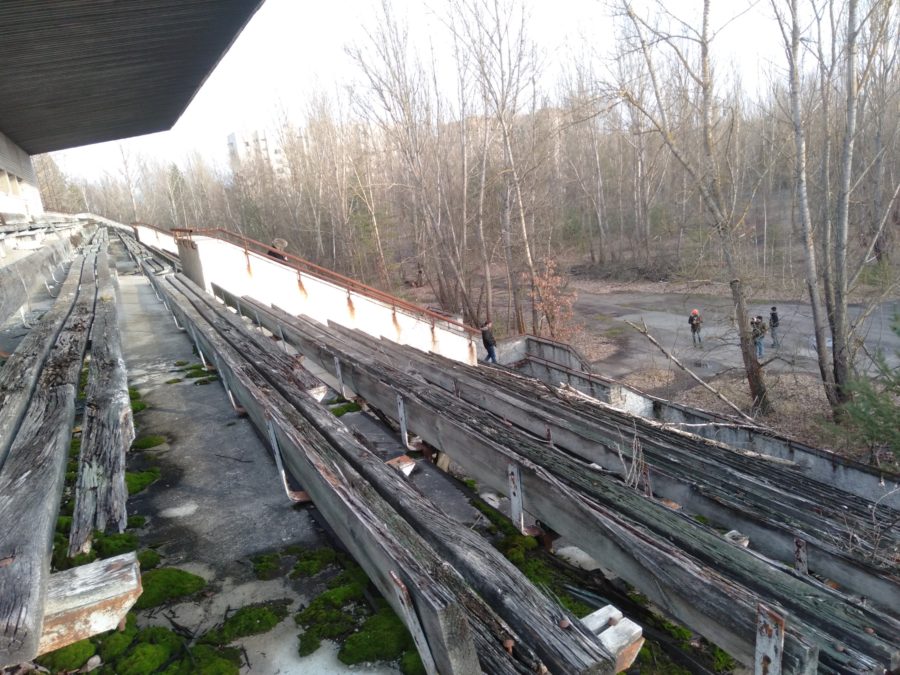
I was 14 years old when the disaster happened in 1986. I remember watching the events on TV and the panic that ensued that a life threatening radioactive cloud was heading our way to the UK. Always wondering what it would be like inside the exclusion zone in the years to come, I never imagined that I would be able to see it with my own eyes.
An interesting article – Chernobyl to become official tourist attraction
Our Tour on YouTube
Our tour around the Chernobyl Exclusion Zone
It was easy to set up a tour. We found Chernobyl Tour online. They came with great reviews on TripAdvisor so we signed up for a $99 day tour, which would take us on a fixed itinerary around the exclusion zone from Kiev. A 12 hour long day trip which would transport us back 34 years in time once we were in the zone.
We met at 7.30 am near the Kiev railway station and jumped on board a minibus with 15 other tourists for the 90 minute ride north to the exclusion zone. Oxanna, our keen guide read out the rules of entry and gave us a detailed account of the events of the nuclear disaster as we drove to the first checkpoint.
Through the 30 km checkpoint
Our first stop was the 30 km Dytiatky checkpoint where half a dozen minibuses queued up while guards checked documents. Remember your passport or you will not be allowed in! Groups of tourists milled around a souvenir shop where you could buy gas masks, dosimeters and all sorts of Chernobyl memorabilia. Chernobyl fridge magnet, anyone?
This is the OFF PEAK period. I can’t imagine how it would be here come peak season.
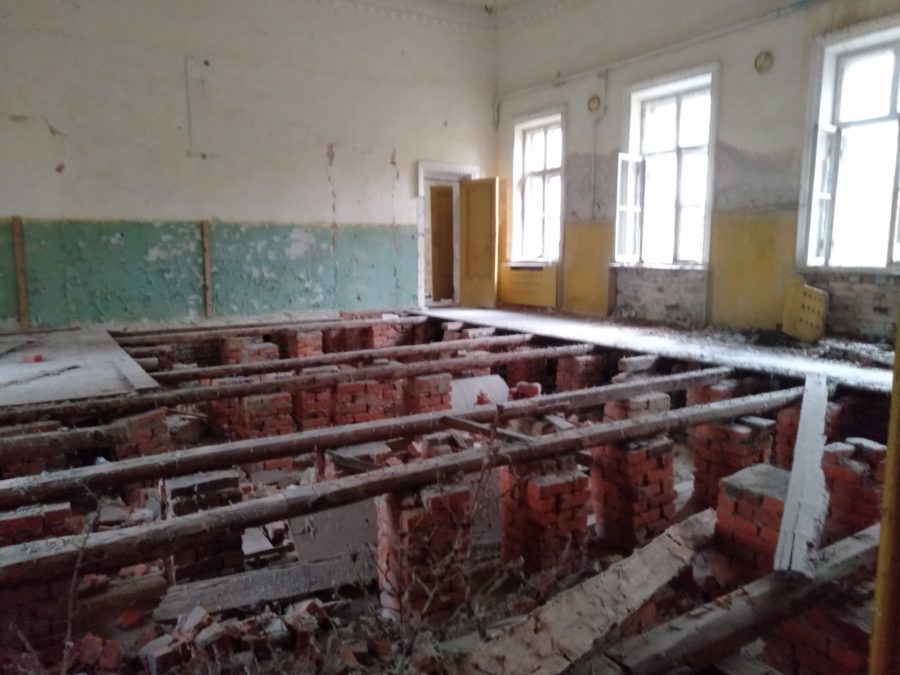
Next we had a stop at one of the abandoned villages, Zallisia. Our first taste of the desolation of the evacuated zone. Most houses were totally trashed and falling down. The community center had its floorboards ripped off by looters who took them for firewood. Pilfering has been a big problem in the zone as corruption is rife and people come searching for any kind of treasure they can find.
Next the 10 km checkpoint
We pass through the 10 km checkpoint at Leliv. More passport checks completed and we are free to go. Next is a stop at another small village, Kopachi. Here we visit a small children’s nursery at the roadside. Like all the other buildings it is rundown, with peeling paint and discarded possessions everywhere. Only the lines of small, rusting children’s beds and the many ragged dolls left behind give it a sad and creepy air.
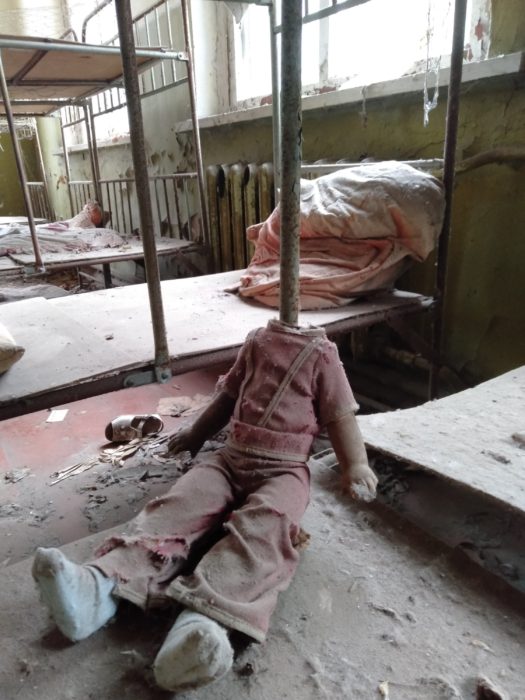
This is a popular place to photograph for the visiting tourists and there is a line of minibuses queuing outside. They try and time the visits so they don’t overlap but it is inevitable. This means there are at least 30 people trying to squeeze into the small rooms to get the ‘doll on the bed’ photo for Instagram. We all try and angle the camera so nobody else appears in the photo to create a sense of desolation.
The Duga Radar Array
Next on the itinerary is the Duga array. This 150 metre high megastructure is certainly something to behold. It was a secret Soviet over-the-horizon early warning missile detection sytem built by the Soviets during the cold war.
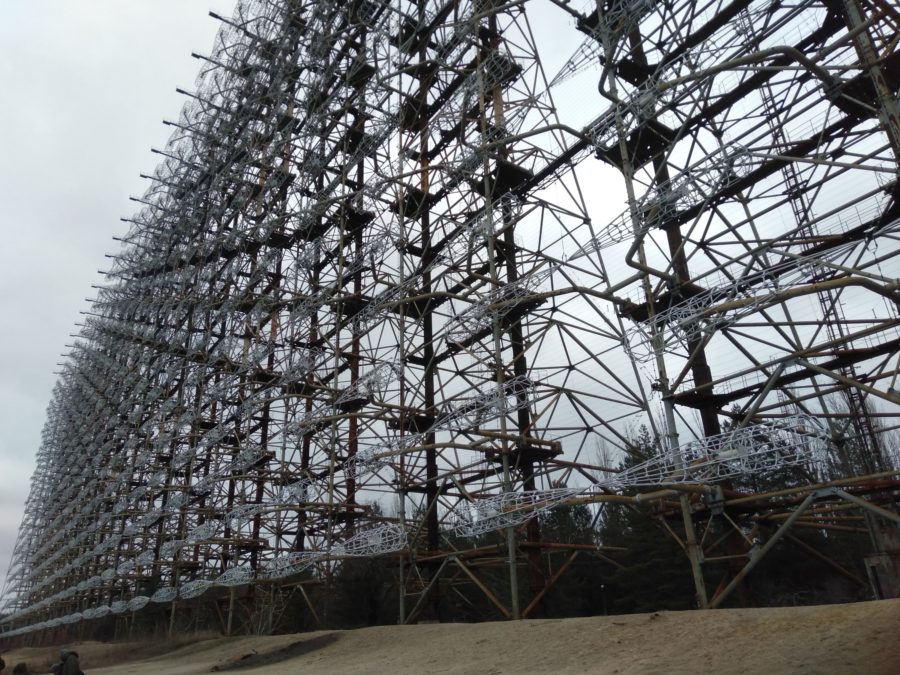
To get there we drive through the contaminated forest on a secret military road and then the antenna suddenly looms above us as we emerge from the trees. We get to walk through the deserted command centre and training rooms and learn about the techniques of electro-magnetic propagation. Fascinating stuff!
Chernobyl Power Plant
We move on to the Chernobyl power plant and stop outside the enormous sarcophagus that sits over reactor 4. The radiation levels are quite low here now thanks to the new containment unit. We can photograph the power plant but none of the surrounding buildings which seems quite odd.
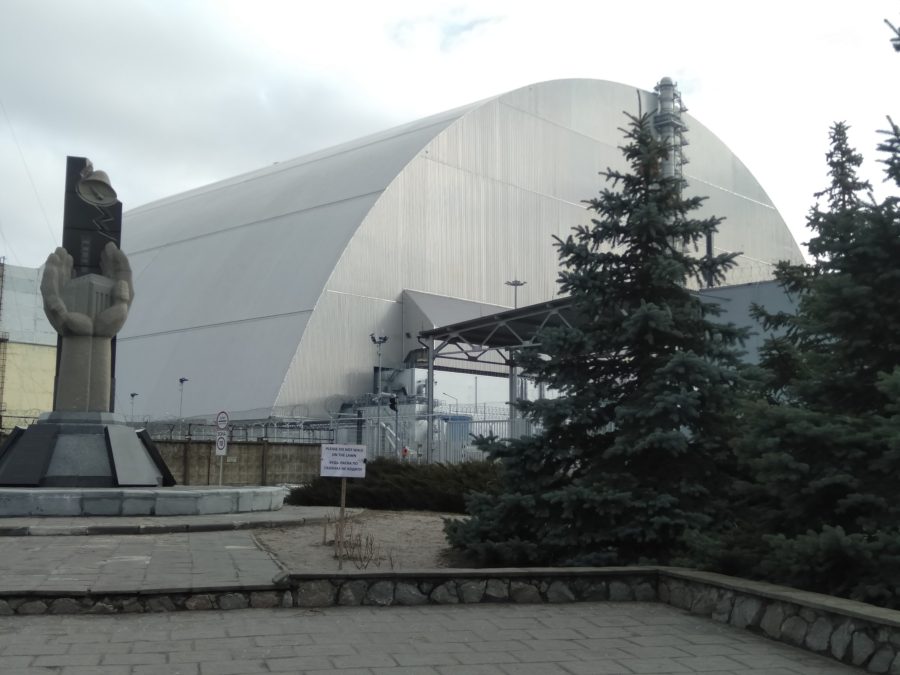
Lunch time! We go to the workers canteen for lunch. This is a great experience to eat in a typical Soviet era ‘stolovaya’ type canteen along with the power plant workers. The Tourists outnumber the workers considerably though. The food is good, filling and healthy. Borsch soup, pork, rice, salad, fruit, desert and 2 drinks. All for an $8 extra fee that you pay when booking the tour.
The Red Forest
Sated from lunch, we move on to the edge of the red forest. The pine trees here absorbed a heavy amount of radiation and turned red as a result. The best clean up solution was to dig up the trees and bury them. The scientists planted new ones as an experiment to test radiation levels. Contamination levels are high in the forest so we stay at the edge. Our Geiger counters scream incessantly and flash ever increasing numbers so it’s time to move on.
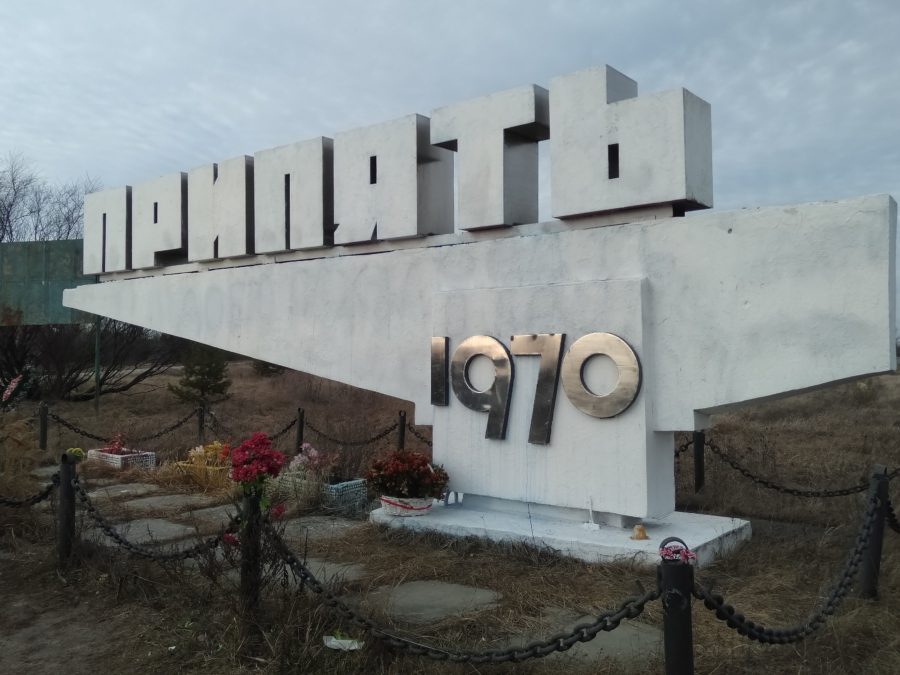
Pripyat
The main event of the day is the visit to the abandoned city of Pripyat. It is here that you get a real sense of the heartbreaking effects of the tragedy as you walk though the wasteland that was once a thriving city. This is the type of ghost town we often see in the post apocylptic movies. Only this is very, very real.
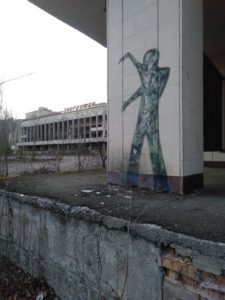
It impresses me that the other tourists on our bus are respectful to the fact that a horrific tragedy occurred here. There are no narcissistic selfies or inappropriate posing in front of the decay.

A decaying city centre
We have 90 minutes to take it all in which is little time really to cover the city. Consequently we focus on the centre and the main buildings, streets and parks. We walk through the stadium which is crumbling around us. The former football pitch is now a forest as nature has reclaimed the land.
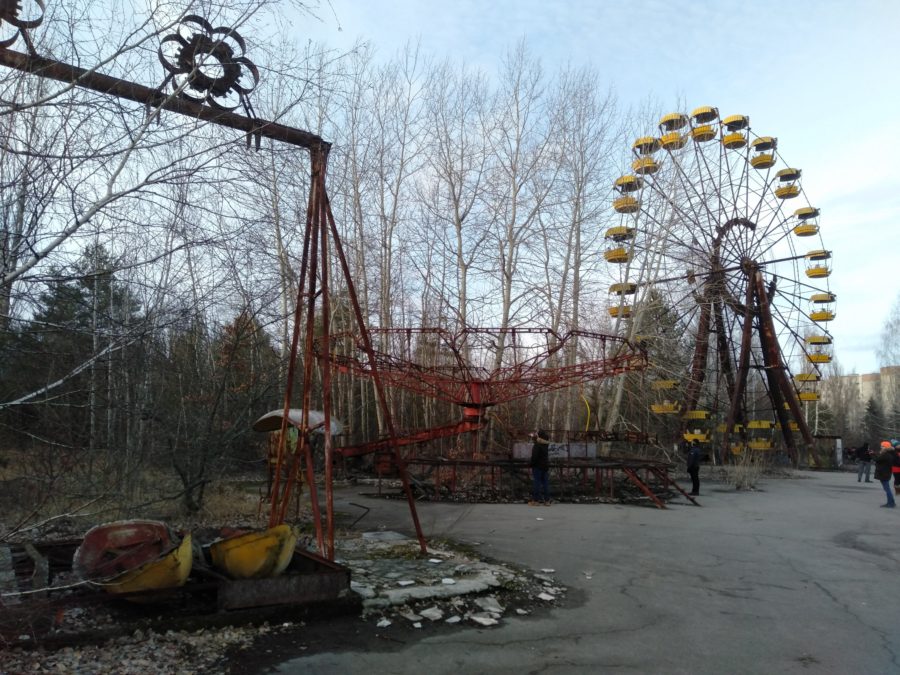
We walk through the city park where rusting fairground rides lie neglected and forgotten, squeaking and rattling as the cold wind blows over them. Many tourists gather here as the area really portrays the severity of the disaster. This was once full of life and laughter and the energy of youth.
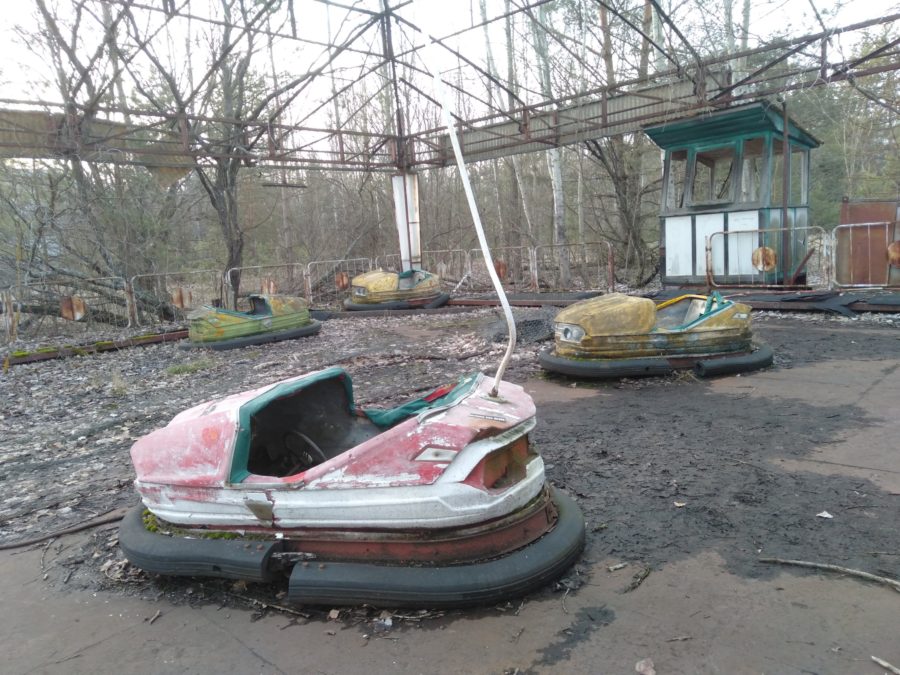
The shopping centre is what really tugged at my heart strings. A place where you can imagine the buzz of daily life happening in this thriving community.
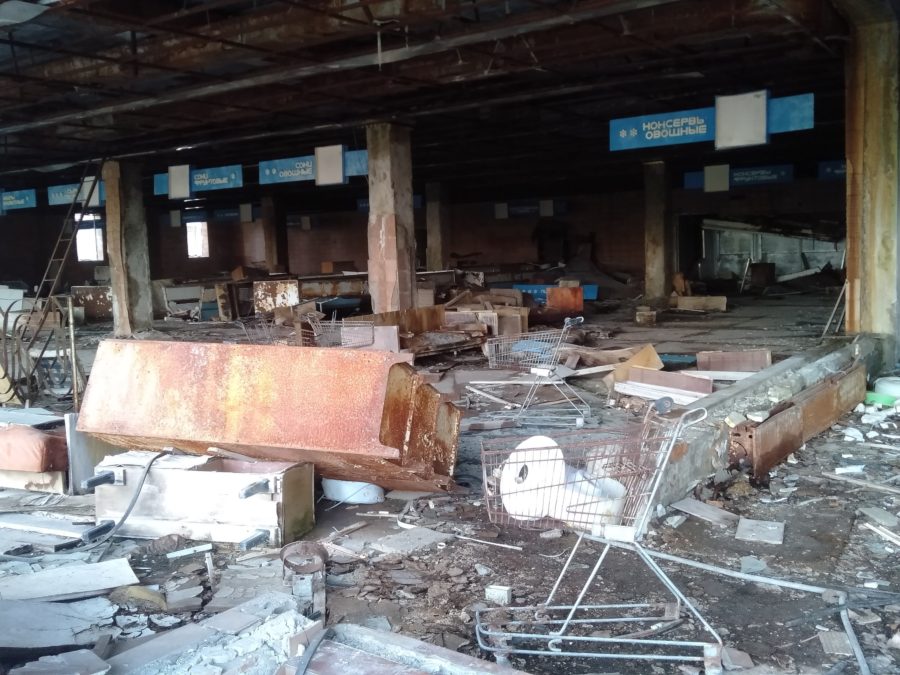
Mind your step
One of the important things you should know about a tour around the Chernobyl Exclusion Zone is that the place is in a serious state of decay. 34 years of hard winters have taken their toll on the buildings and they are starting to collapse. Therefore roofs are falling in, floors are rotting and windows are dropping out. Tourists are not supposed to enter buildings for this reason and tour companies are under pressure to uphold this rule.
Many groups turn a blind eye and allow it to happen. There was a professional film crew filming in Pripyat when we were there so the police were on high alert to stop people entering buildings.
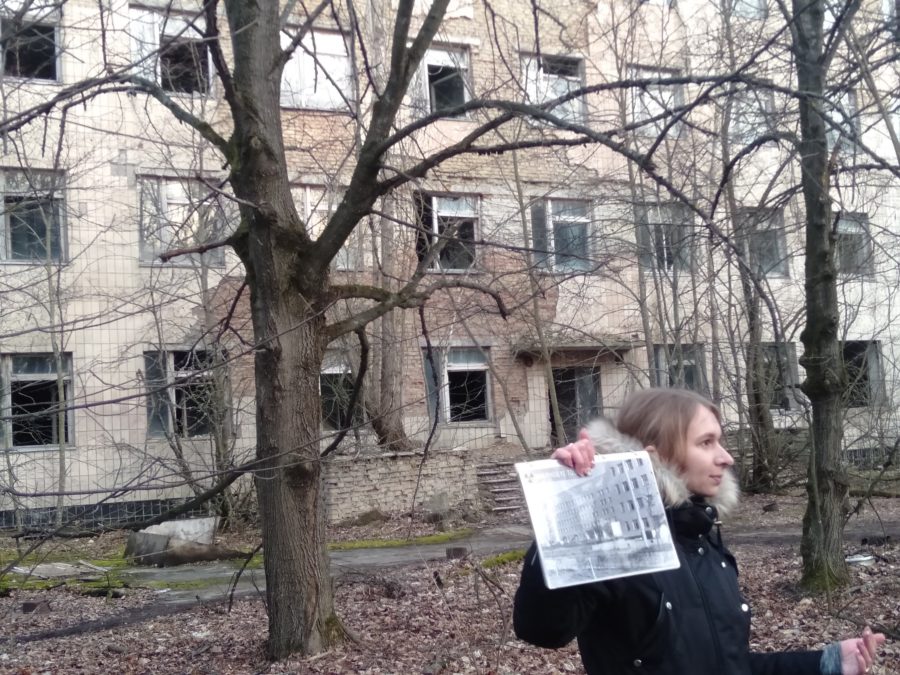
At first we were disappointed that we could not enter the swimming pool complex and the school that we’d heard about. But in retrospect it seems a sensible request that people do not put themselves at risk for that all important shock-value photo.
If tourism continues to grow here in the Chernobyl Exclusion Zone, then the authorities will be at liberty to prevent any serious accidents before one inevitably occurs. This will no doubt come in the form of ticket access, a higher security presence and more restrictions to dangerous areas.
A physically and emotionally draining day
The 12 hour day spent visiting the Chernobyl Exclusion Zone is a very draining experience. Once we had completed our tour of Pripyat, we stopped off near Chernobyl town to see some parked up military vehicles, cranes and robots. The liquidators used these during the clean up process.
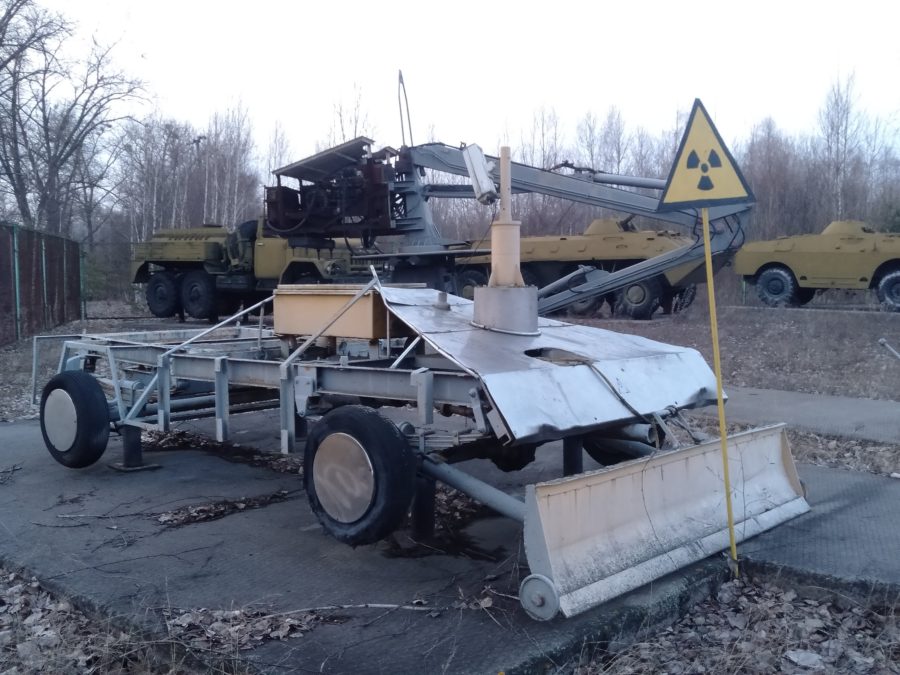
On the way out of the zone we passed through radiation detectors to check our levels of contamination. Once given the all clear, we were free to leave. I couldn’t help falling asleep during the 90 minute drive back to Kiev. I found it to be a very emotionally draining experience but enlightening to witness at first hand what damage we can do if we fail to respect our duty of care to our environment.
Tips to enhance your trip to the Chernobyl Exclusion Zone
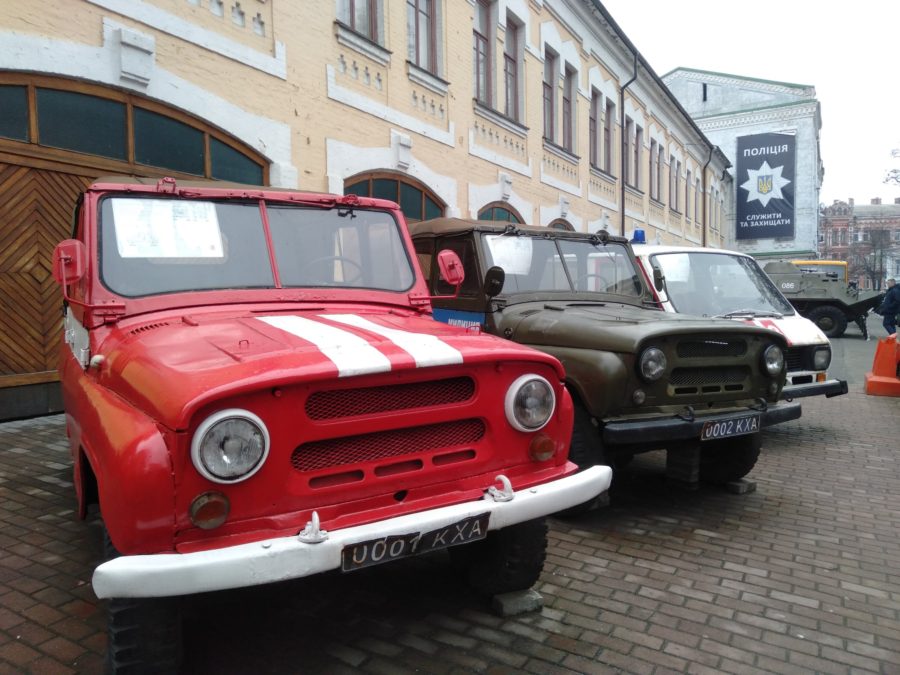
- Before you go, pay a visit to the Chernobyl museum in Kiev. Hire an audio guide there and you will learn all you need to know about the nuclear disaster at Chernobyl and the situation in the zone.
- Book a tour online at least 4 days before you plan to go. The prices goes up 50% closer to the date and they need the time to secure your permit.
- Remember your passport on the day. They will not let you in without it.
- Take water and some snacks to keep you going over a long day.
- Hire the dosimeter to check radiation levels. This will not only enhance your experience but help you to avoid contact with radioactive hot spots.
- Follow the rules and do not touch any surfaces. This includes even putting your camera on the ground which could contaminate it.
- Show respect. Remember this is the site of a devastating tragedy that killed many people and destroyed countless lives.
Who are the Frugal Travellers? Read about us
Leave a comment below
We hope this post was useful to give you an idea of what it is like to visit the Chernobyl Exclusion Zone. If you have any more to add or have any questions, please write in the comments box below. We’d love to hear from you.
More strange places in this bizarre world of our to visit!
- Moynak, Uzbekistan – Visiting the former Aral Sea port
- Ashgabat, Turkmenistan – One of the strangest cities on earth
- Astana, Kazakhstan – Why you should visit Astana
- Gobekli Tepe, Turkey – Visiting the oldest temple on earth
Like This Post? Pin It
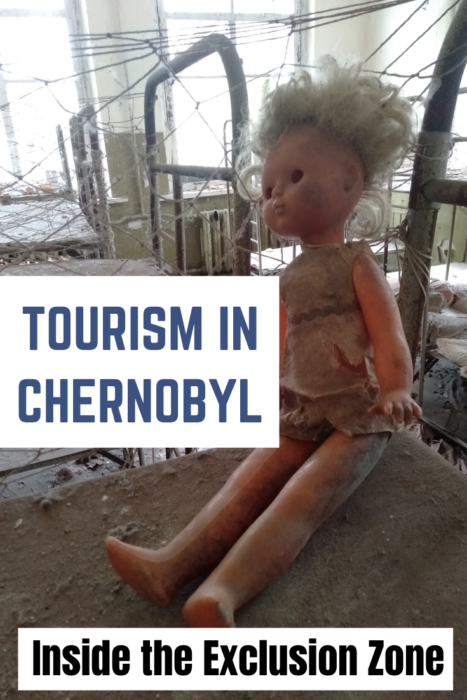

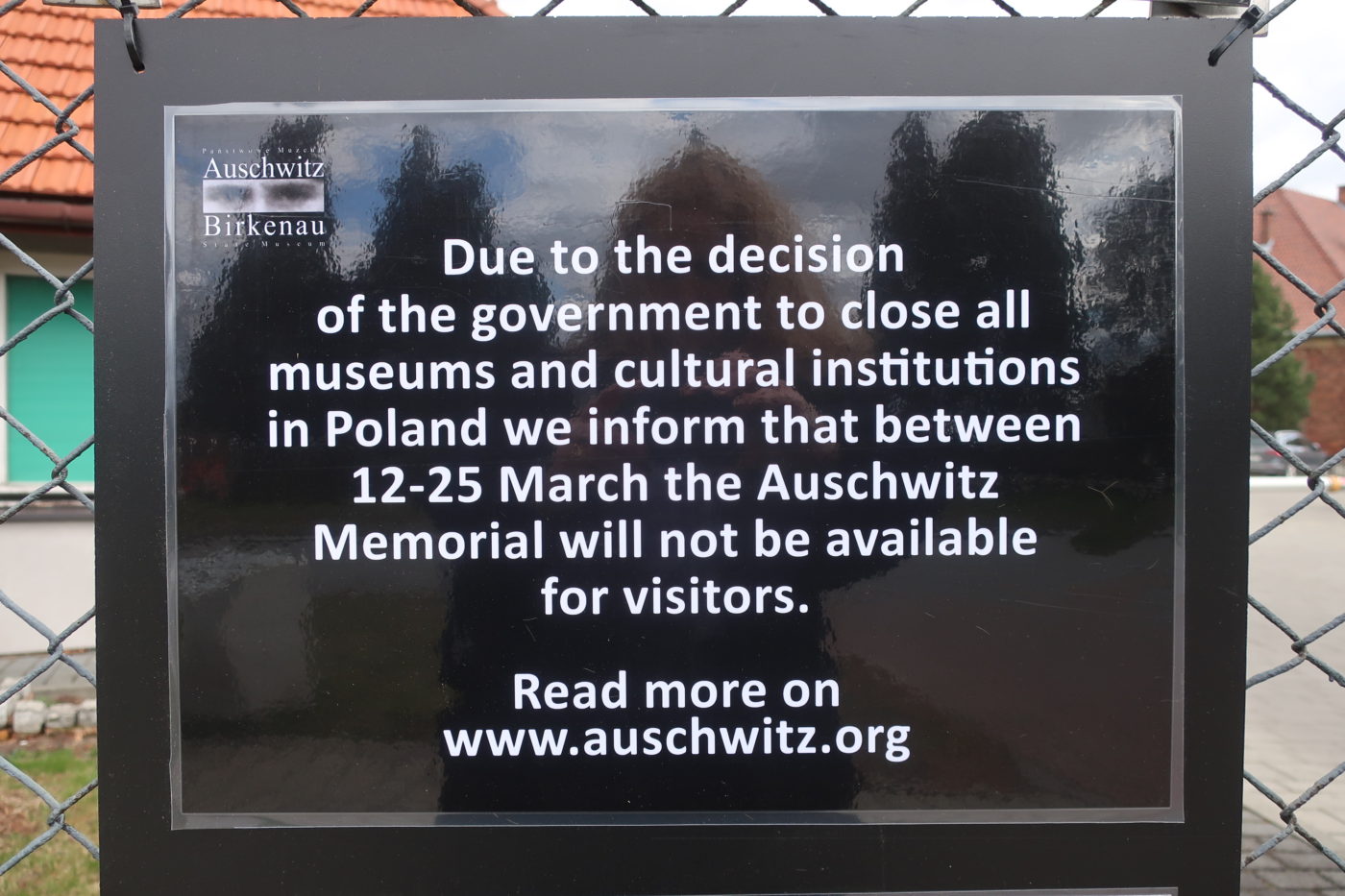

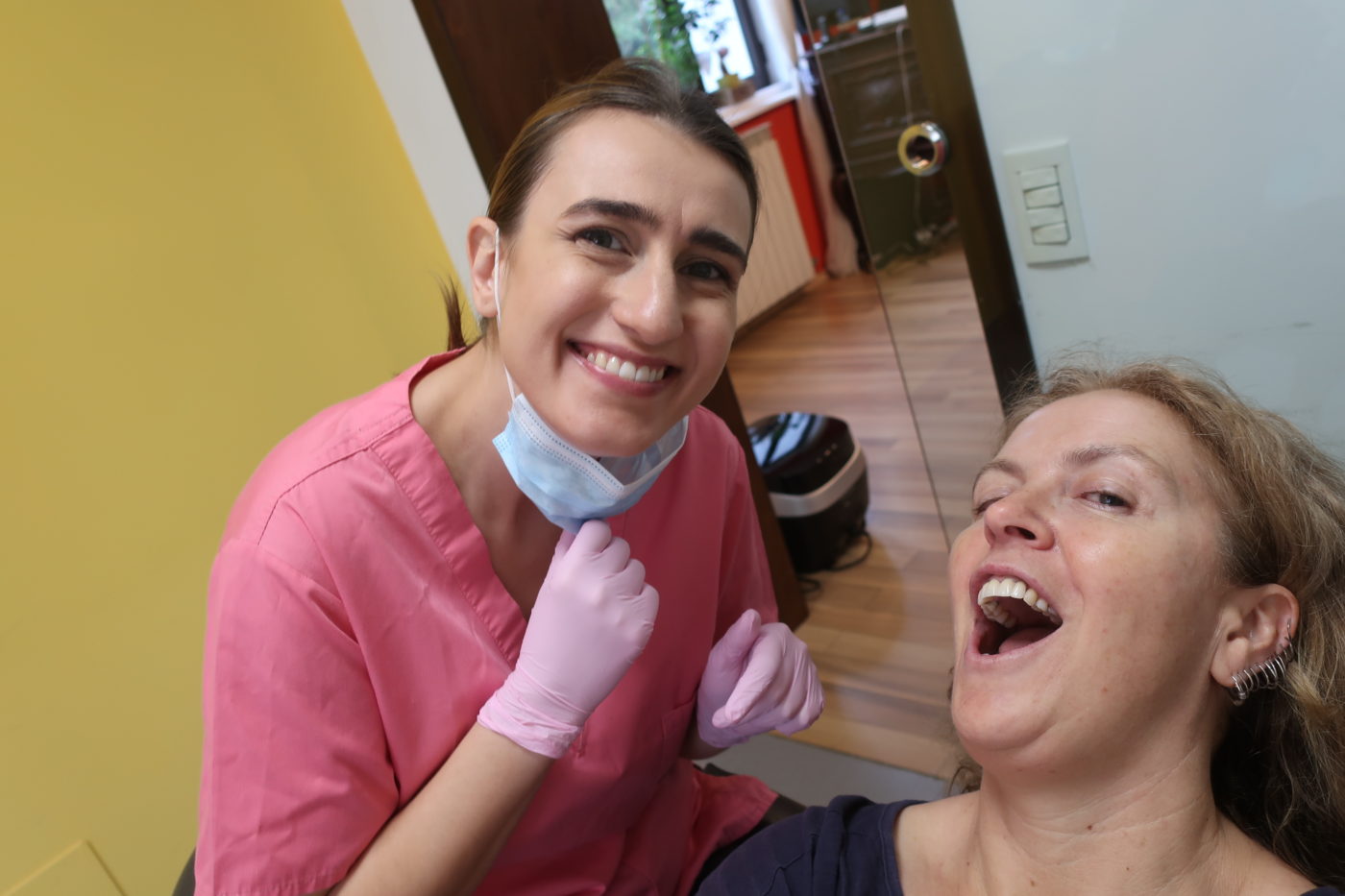
2 thoughts on “Chernobyl Exclusion Zone – what it is like to visit in 2020”
Hi just wondering where did you stay ? I’m looking at planning this trip but a two day tour so need to know where to stay the night before. Any help would be much appreciated.
We stayed in an AirBnB shared apartment in Kyiv,and just went on a 1-day tour.